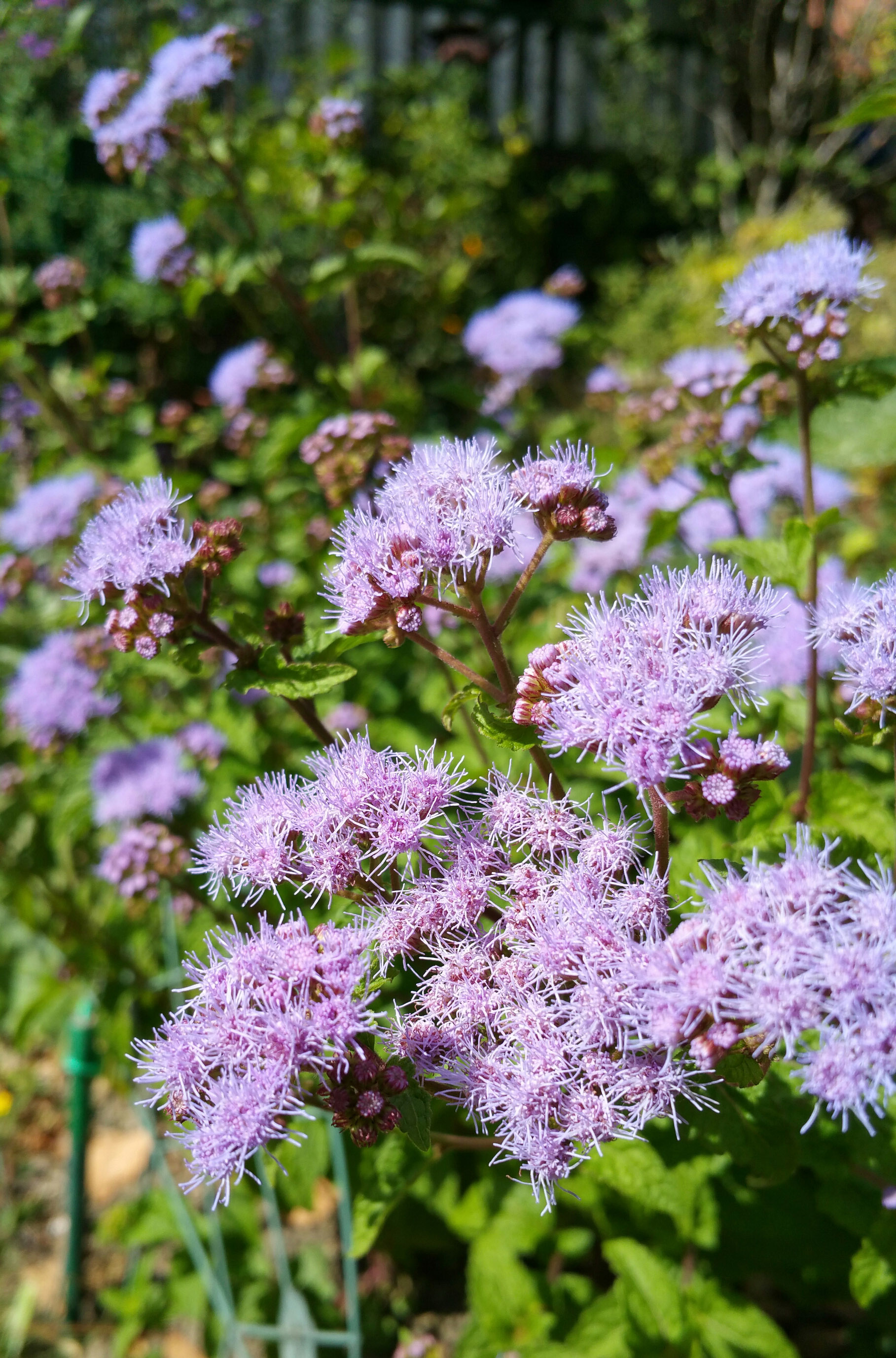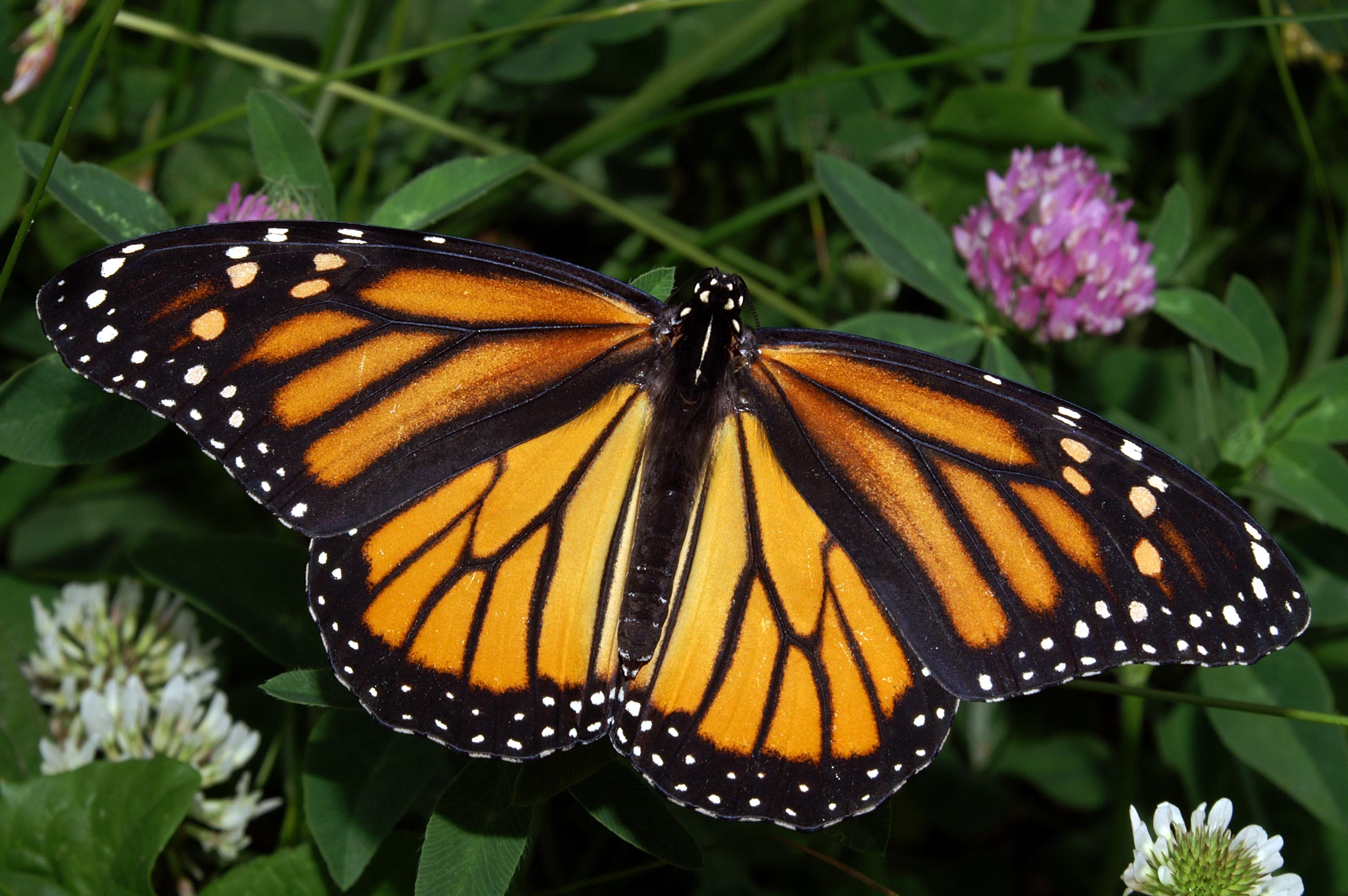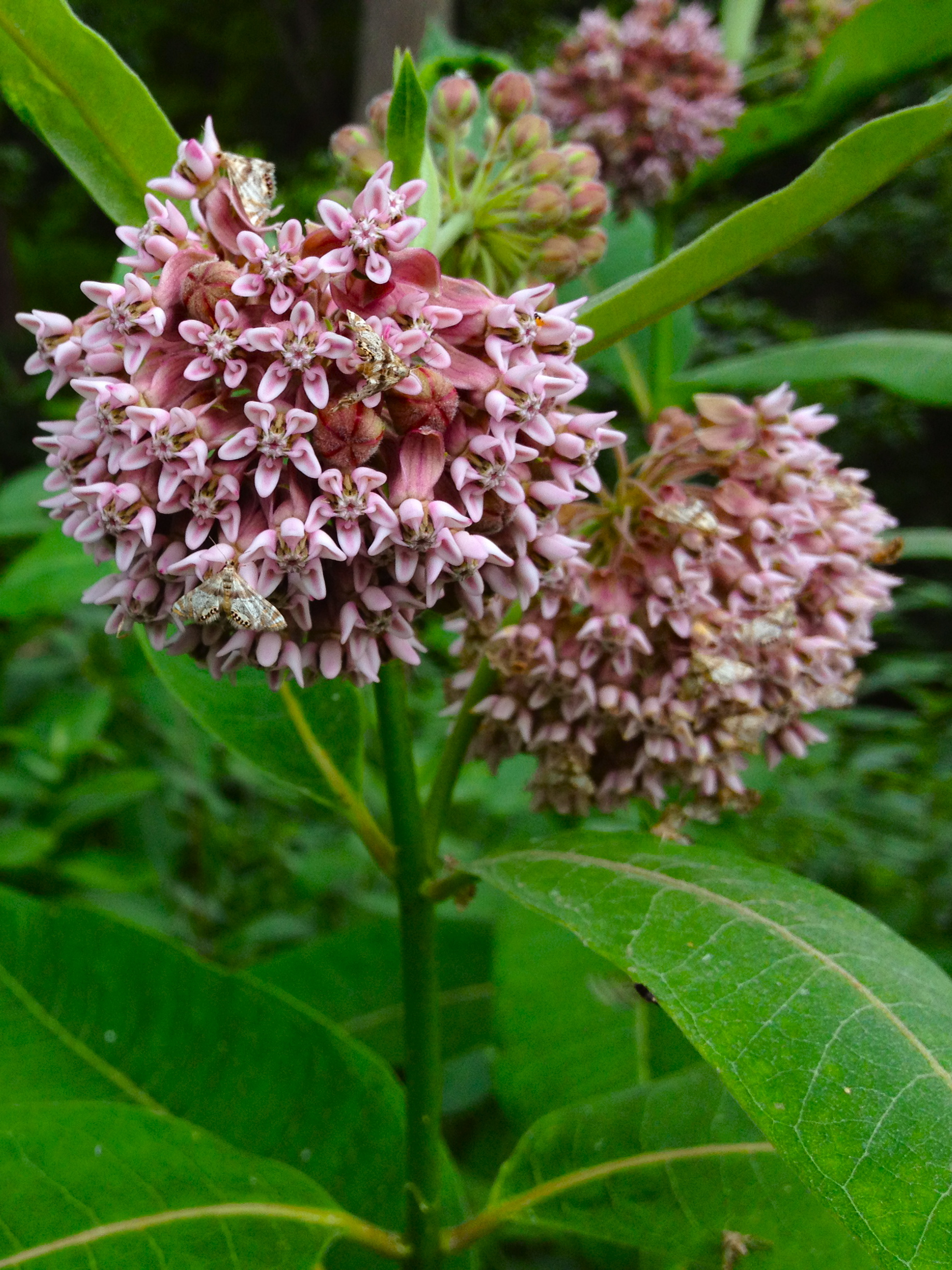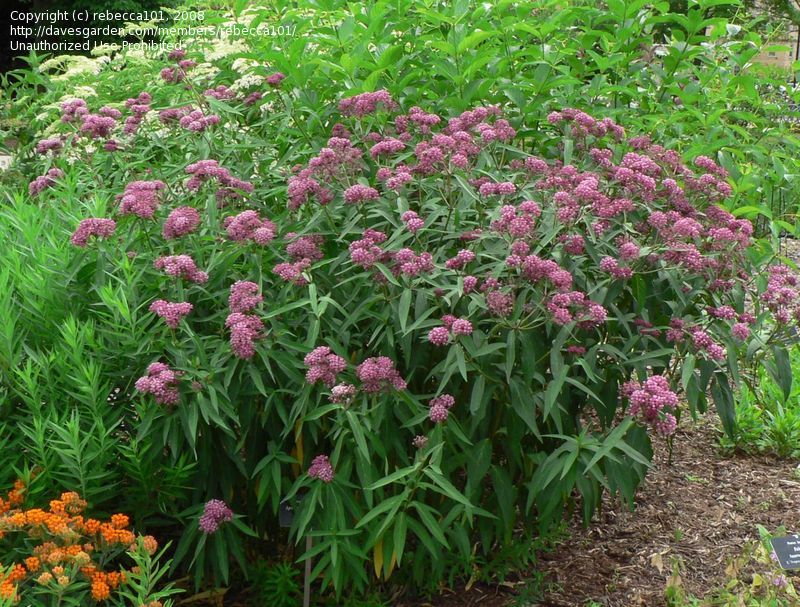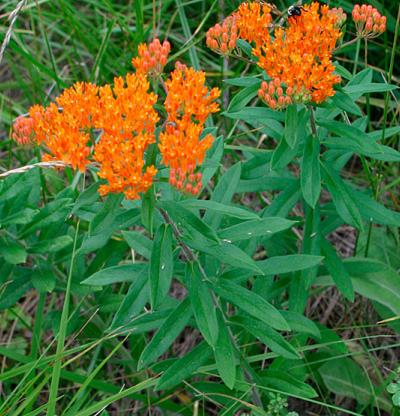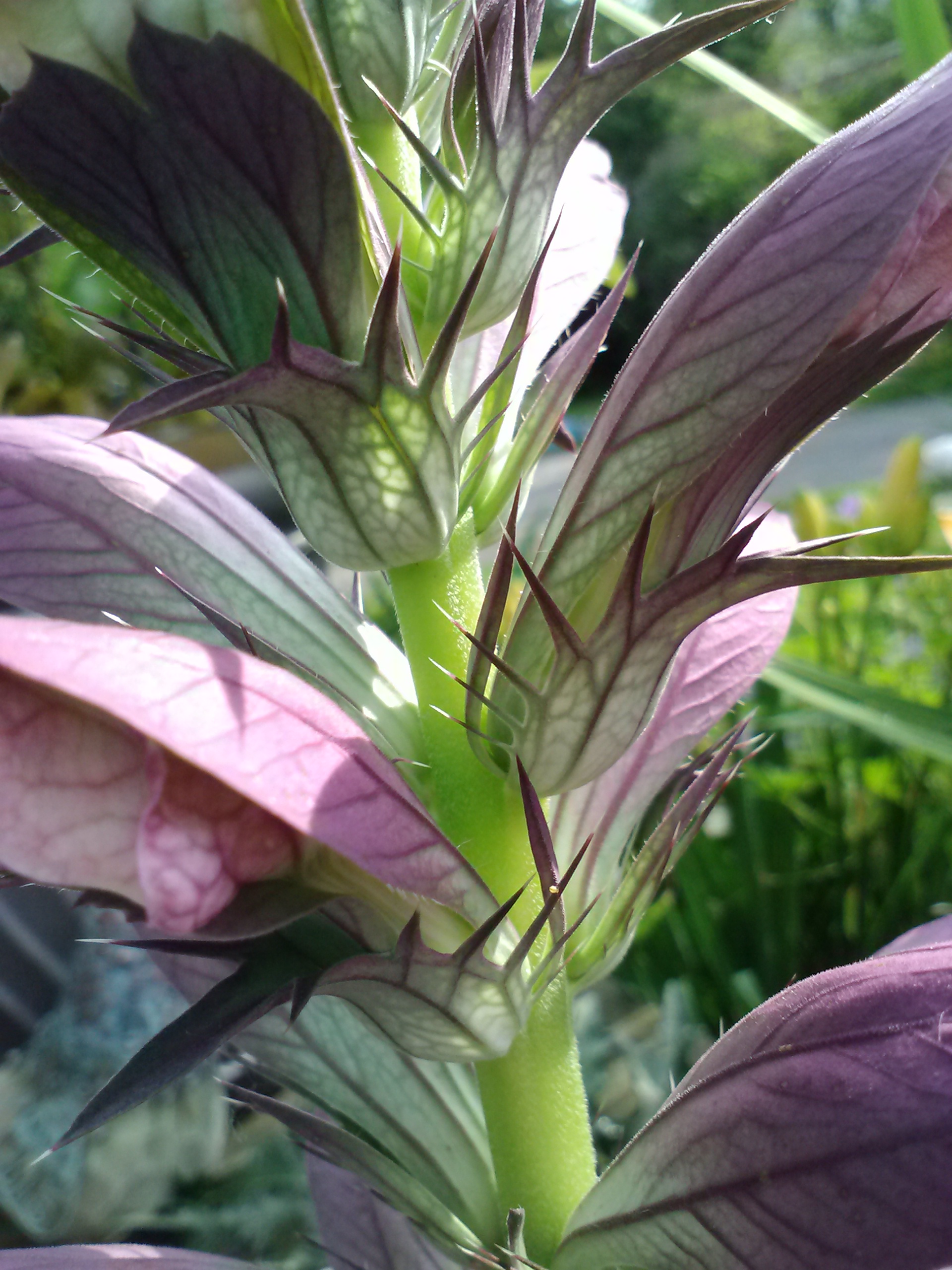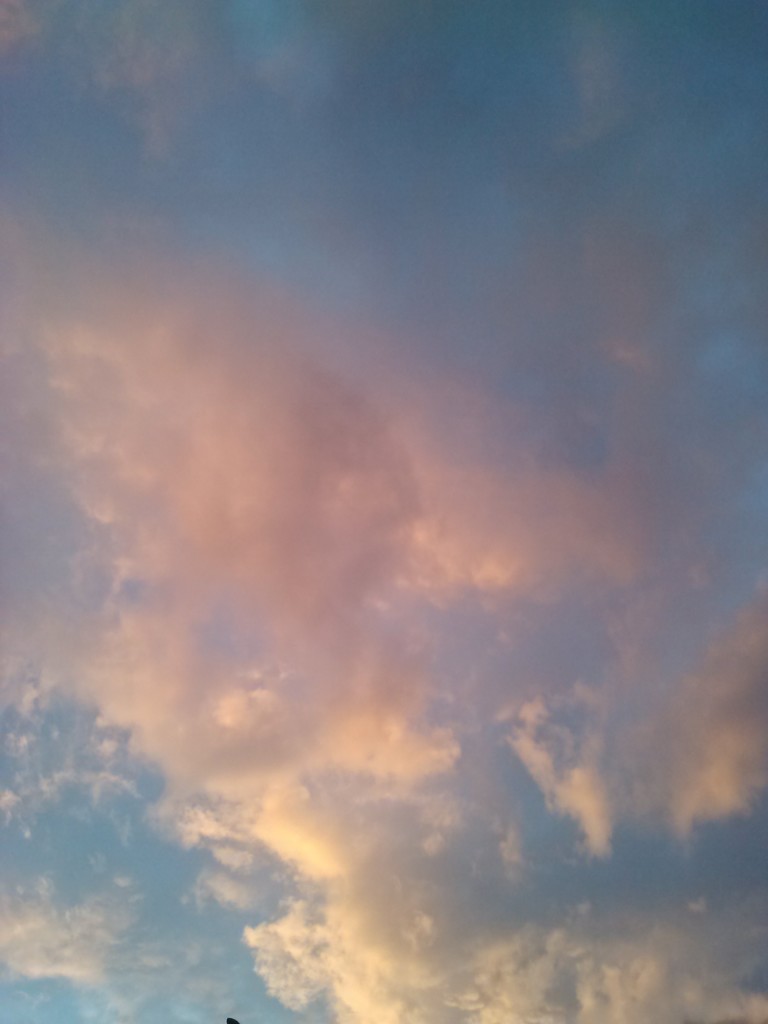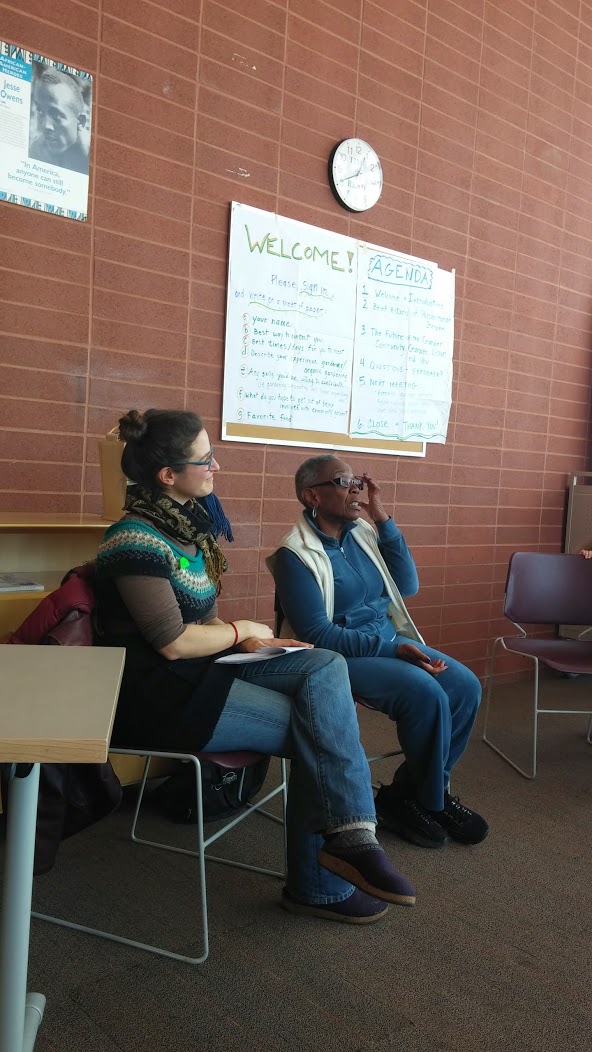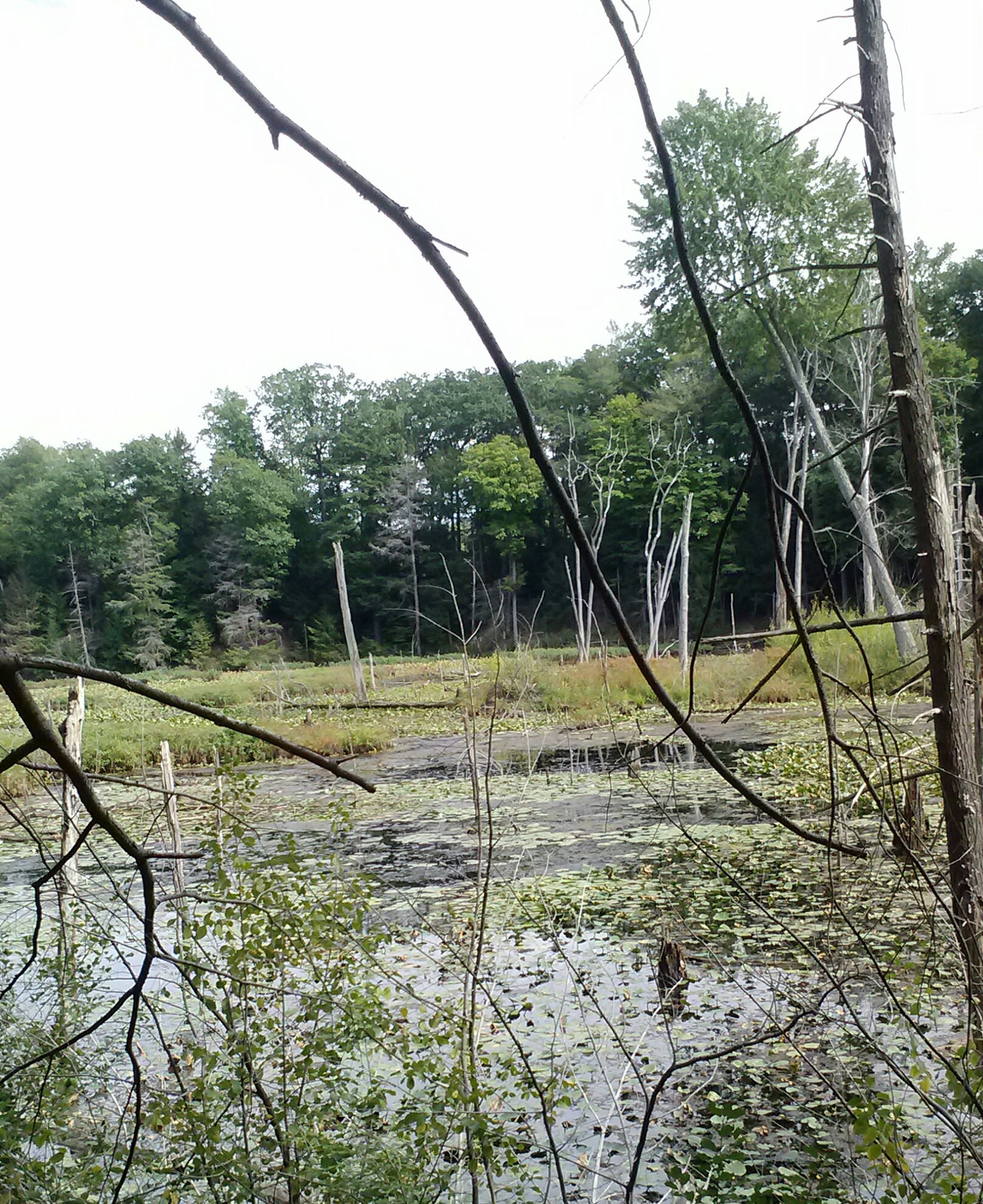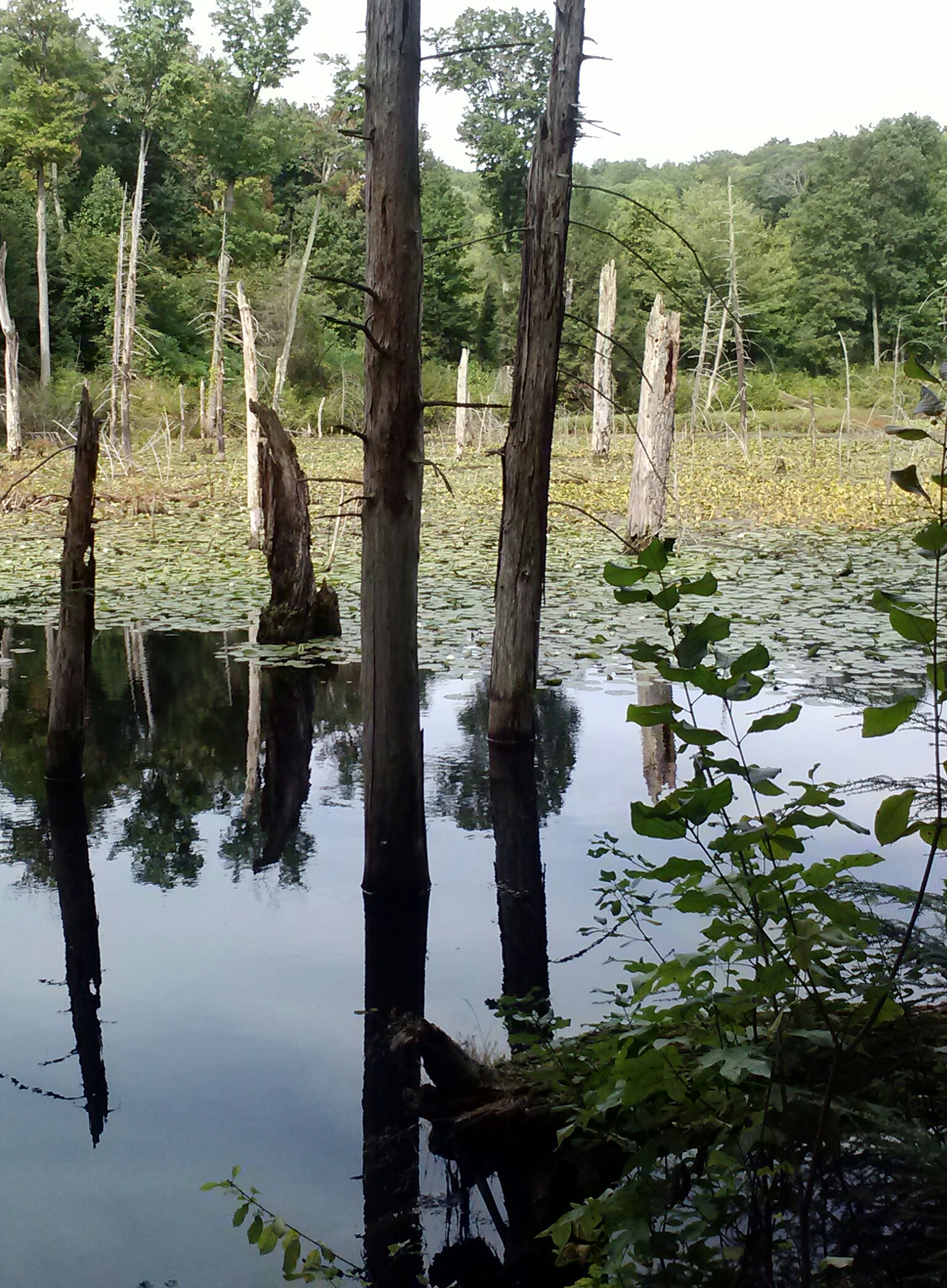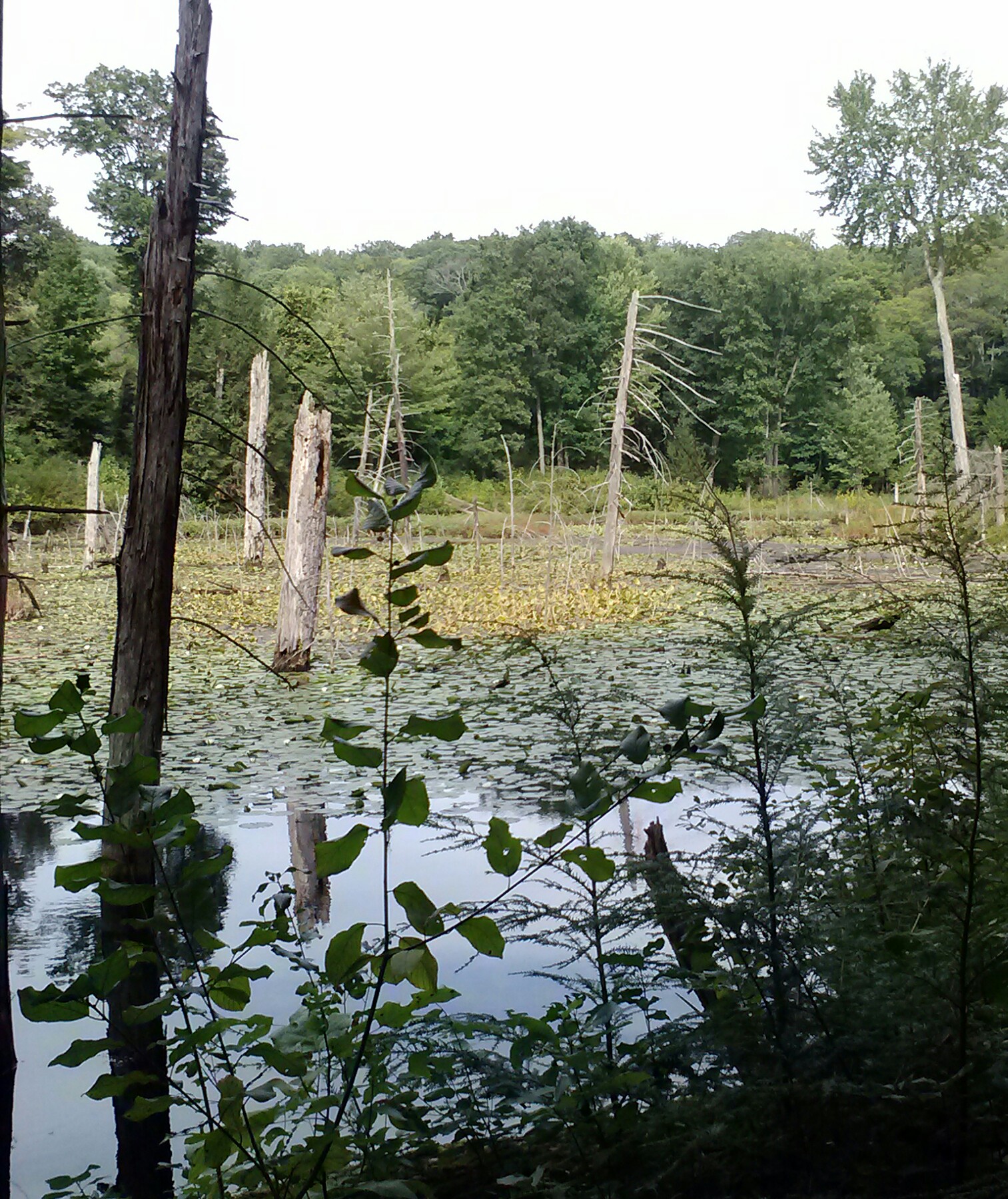Monthly Archives: September 2015
“After Blueflags” by Elsa Johnson
by Elsa Johnson
After Blueflags
(Homage to WCW)
We stopped to gather pods
from the milkweed plants
where they grow
in the meadow
amid tall grasses
that wave
as wind blows
and rain falls
and runnels the ground
toward the swale
where we planted blueflags
one spring
in water
with sunflowers beside.
The milkweed pods
are like fat fish
which we pull
from stalks
and carry
in our pockets
and our arms
to the ditch
where our hands grow sticky
with white sap
as we pull apart pods
for the seeds inside
lined up like fish scales
tied to silk threads
which we rend and scatter
so they drift
in wet air
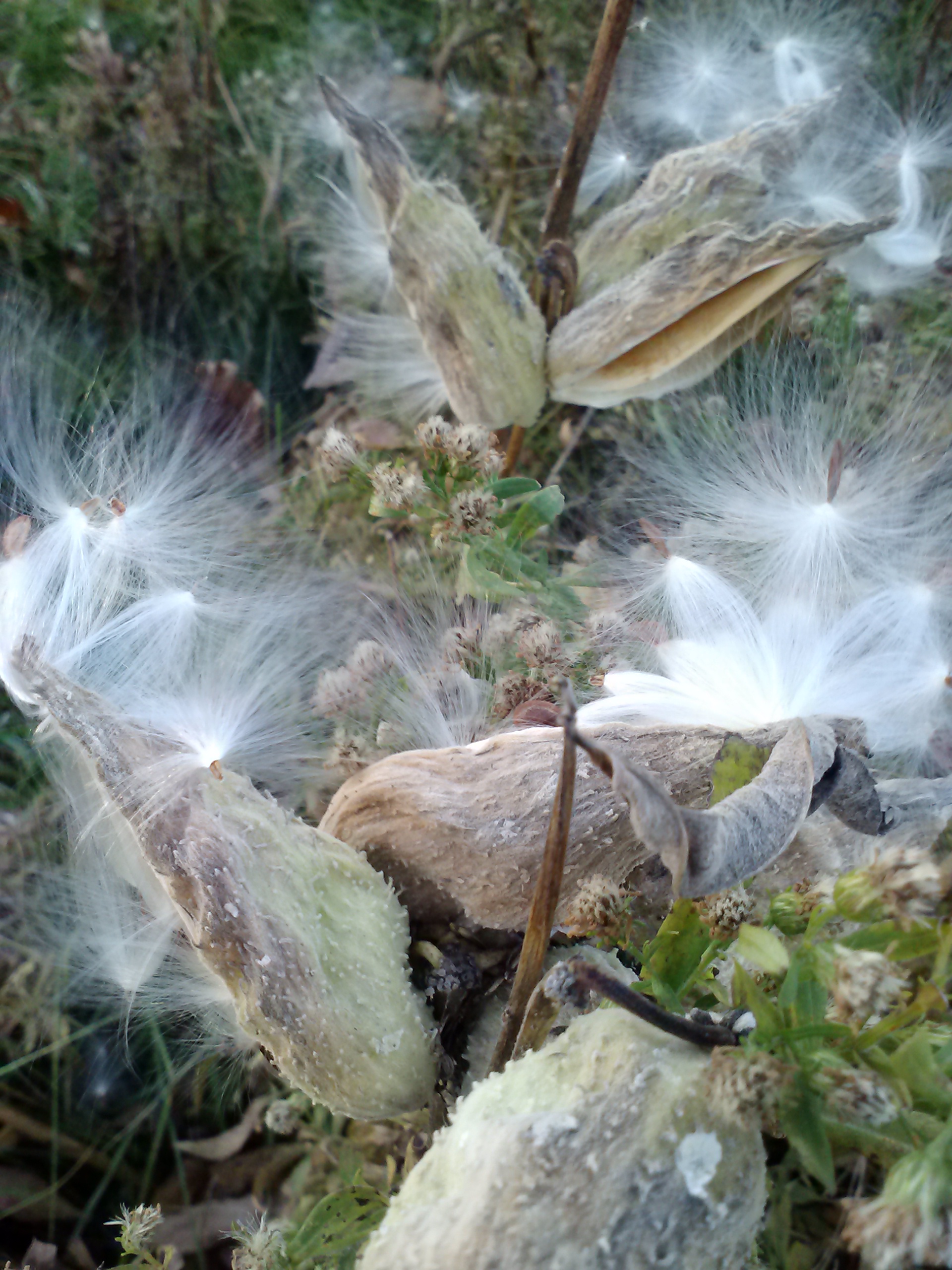
Plants We Like: Milkweed-Schmilkweed – What Do Those Darn Monarchs Want, Anyway? by Elsa Johnson
Elsa Johnson
We constantly hear how the Monarch butterfly population is at risk because they are dependent on milkweed plants for survival. What does that mean? Is timing important?
The answer to both questions is … not quite so much for the adult Monarch butterfly as for the Monarch caterpillar. The caterpillar, the larval stage of the butterfly, MUST have milkweed. It eats nothing else.
Adult Monarch butterflies drink only liquid, mostly in the form of nectar that they suck up through a tiny tube (called a proboscis) just under the head. They can get nectar from a variety of flowering sources. To attract adult Monarch butterflies, one need only plant a variety of nectar rich flowers, including the various species of milkweed native to one’s area. As the non-breeding Monarch’s – that is, the migrating population of Monarch’s (as opposed to the breeding stay-at-home population) fly southwest on the migration to Mexico, it is important that they find nectar sources along their route. This should be a variety of flowering plants with staged flowering times to give both stay at home and migrating Monarchs a continuous food source. Milkweed of course should be included in the mix.
It is the stay-at-home breeding population that specifically need milkweed plants. Adult butterflies lay their eggs only on milkweed plants because in the caterpillar stage of their life cycle Monarch’s eat only the leaves of milkweed plants. They can denude a milkweed plant of its leaves (but that’s ok; the leaves will regenerate).
Monarch friendly areas should be not be mowed or cut back until butterflies have migrated from the area (a good reason to practice garden sloth on either a small or large scale). For large areas, mowing in patches insures that pollinators always have access to undisturbed habitat and can recolonize mowed areas. Avoid the use of herbicides and pesticides.
There are 13 species of milkweed native to Ohio. The most common to the fields of Northeast Ohio is Common Milkweed (Asclepias syriaca).
You can find large stands of this milkweed in the Great Meadow of Forest Hill Park (feel free to take some pods home!). This species can spread aggressively — though for now we are not convinced that is such a bad thing.
The milkweed species are most often found in area nurseries are Swamp Milkweed
( Asclepias incarnata)
and Aesclepias tuberosa, with its startling orange flowers.
Both respond to garden sloth by self- sowing. Interestingly, caterpillars on A. tuberosa have a greater survival rate then on the other milkweeds.
Links:
Milkweed information sheet: monarchjointventure.org
The Xerces Society : milkweed seed finder database

After Blueflags
(Homage to WCW)
We stopped to gather pods
from the milkweed plants
where they grow
in the meadow
amid tall grasses
that wave
as wind blows
and rain falls
and runnels the ground
toward the swale
where we planted blueflags
one spring
in water
with sunflowers beside.
The milkweed pods
are like fat fish
which we pull
from stalks
and carry
in our pockets
and our arms
to the ditch
where our hands grow sticky
with white sap
as we pull apart pods
for the seeds inside
lined up like fish scales
tied to silk threads
which we rend and scatter
so they drift
in wet air
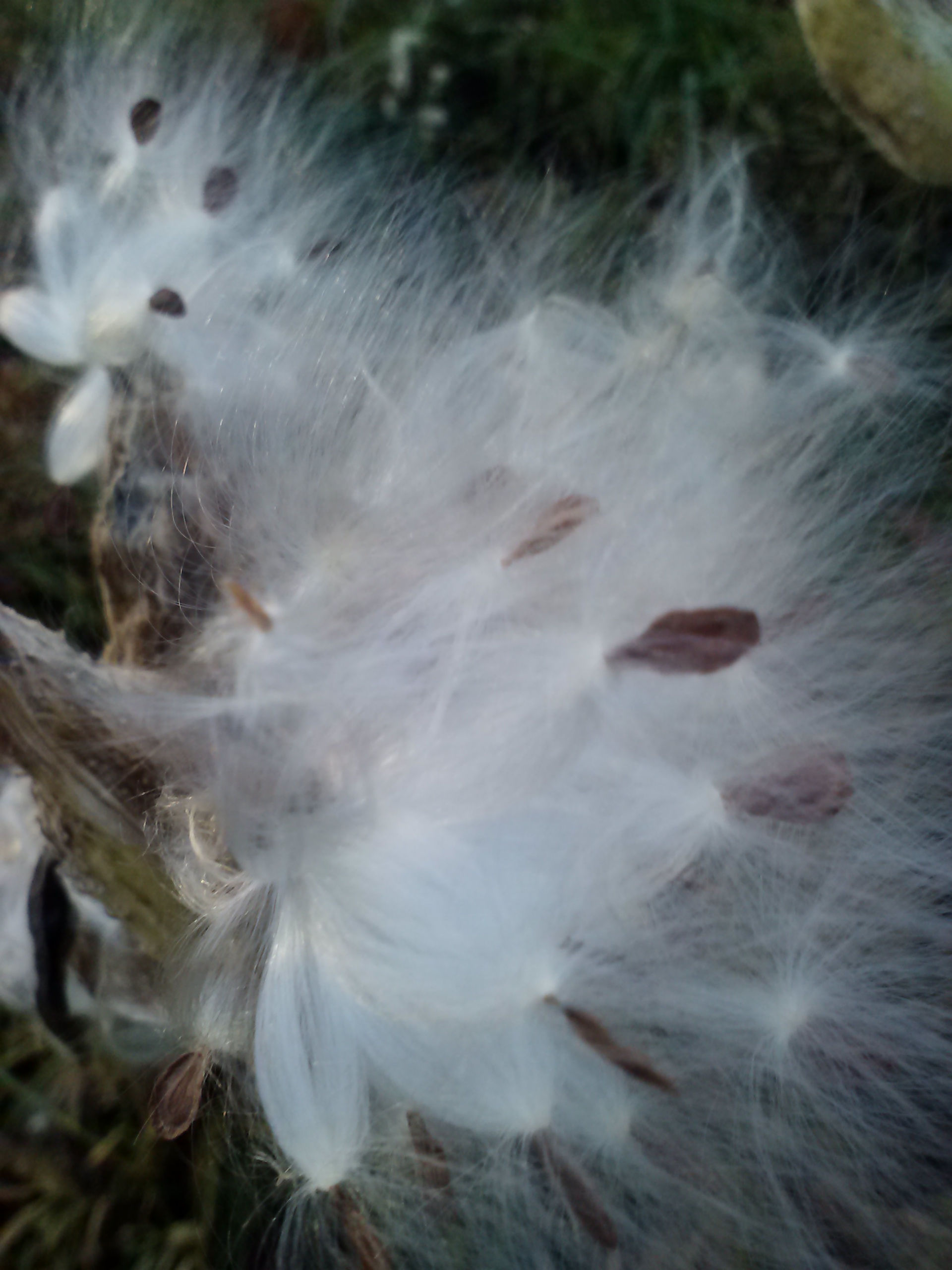
Barbed: Then and Now by Elsa Johnson
Barbed : Then and Now
(‘ homo homini lupus’: Plautus)
Elsa Johnson
It was Acanthus mollis that found its soft
voluptuous way a-top the severe slim
columns of the temple of Olympian Zeus
that took six hundred years to build and was
finished (at last) only to endure intact a single
century before being reduced to a stockpile of
marble construction blocks Those columns needed
spikes : A. spinosus – each lurid leaf and flower
armored Walking past it several times each day
I think …surely a plant for a feral culture :
barbed – as in barbarian What use sweet reason
when the wolves sweep down ? …howling death
death death (yours – not theirs) …destruction
singing through their veins …their shining eyes
In Connecticut by Elsa Johnson
In Connecticut
Elsa Johnson
Above the beach at Hammonasset a whirl of
many swallows circled just below where clouds
formed flat-bottomed as though resting on
a surface we could not see : piling up
billowing above into the hued sky Just there
was where the swallows flew their continuous
rotation The water … was New England cold…
we lingered only an hour When we left
the swallows still winged and swirled sustained
by what… …we could not see Early evening
on my son’s front porch we watched two quarrel
some hummingbirds visit the feeder High — high
above — a clearly modeled three dimensional
moon hung waxing in a still bright sky
Is It Ripe Yet? by Ann McCulloh
Call and Response
Elsa Johnson
I say grace is where you find it …sometimes
in such unexpected places Amazing
that the fleas hoping to camp on Loki’s face
moved him to try to talk like a bird There he sat
high up in a flea-less open second floor window
opposite a wire where a robin perched and chirped
and he chirped back or tried to Such strange
sounds coming from a cat I did not at first hear
attempted conversation only slowly perceived
each single syllable birdcall met by ‘erk!’ from cat
…and then… later — at day’s end — in the garden
when the light changed infusing all with gold
the blue sky deepened and the clouds glowed back
like one of those Renaissance paintings …like grace
One Thing I Learned This Year by Diana Sette
What I Learned This Year
By Diana Sette
To say simply what I’ve learned in the garden this year can be done so in three sentences:
1. Explore what is possible.
2. Never stop engaging with and building community, this is the greatest resource.
3. Know your personal limits, respect them, and ask for help when you need it.
When We Started
In many ways I relearn and practice these lessons every year in the garden- sometimes I am left with greater feelings of satisfaction than others, yet always grateful for the garden lessons.
I am constantly overdoing it, ambitious and ever exploring. This quickly ties in my third lesson- know your limits. This season I’ve practiced this in taking a new position as I work with Possibilitarian Garden, our community-based garden on E 117th St off of Buckeye Rd. I see all the work that there is to do to improve the soil, to connect with neighbors, listen to the land, and woo the beneficial pollinators. Yet I am only one person, and I have a family and a full-time job, and numerous other organizations I play significant roles in- and I have to check myself constantly to make sure I am gardening within my limits.
That doesn’t mean that I am not always remaining open to what is possible, because I am. Because my vision has only grown clearer of the regenerative community space that a garden can play. The plants and the people that gather around and amongst them in community is what continues to show and clarify this vision for me. And just like my baby seedlings, that vibrant vision for community I hold only grows in mind, and this garden has reminded me again this year to continue to nurture it because the pay off is long-term. Because it is a regenerative cycle. And because a community garden will only build upon its potential fertility for gardens and community, if I nurture both community and gardens.
Finally, it is the community that makes a community garden, and this is what I am continuing to learn here. Margaret Wheatly sums up a key lesson that resonated with me this season, “Our communities must support our individual freedom as a means to community health and resiliency. And individuals must acknowledge their neighbors and make choices based on the desire to be in relationship with them as a means to their own health and resiliency.”
So whatever I planted in my community garden this year, it has been in community and based on the desire to be in relationship with community. The importance of this is what I learned the most this year.
*If you are interested in getting involved with Possibilitarian Garden, we are having a Harvest Party and Work Day on Sunday, September 27 from 1-6pm, and will be a fun event of planting pollinator friendly plants, sheetmulching, grilling, spoken word, sweating and getting dirty with new friends!
Contact me at Diana_sette@yahoo.com for more info.
The garden this autumn
A Hike to Holden Arboretum’s Carver’s Pond by Elsa Johnson
A Hike to Holden Arboretum’s Carver’s Pond
Elsa Johnson
When the Cleveland Museum of Natural History holds its annual symposium there are GREAT opportunities to go on hikes that visit some of northeast Ohio’s very special places. The hike to Carver’s Pond is one of these. I’ve been on this hike several times, and it is always rewarding. The pond is a Holden Arboretum holding, but lies outside the arboretum proper and can be visited only with special permission and a guide (ours was led by Holden’s own Roger Gettig).
So the first part of our trip involved first getting to the place where the hike began, near an enclosure where Holden is testing the pest or pathogen resistance of various trees and shrubs. Then one wanders through a large unmown field (full of bee-full goldenrod this time of year) where Holden has planted more trees to observe over time (White Pine, Dawn Redwood). Then you tromp a long way through an oak/beech forest, overlooking a creek that is in some places a hundred feet below…
And then you are there.
What makes Carver’s Pond fascinating is that it lies in a submerged valley that itself lies thirty feet above the creek below. The natural outlet at the west end of the pond has been blocked by a beaver dam, creating a water impoundment of about 5 acres, studded with water lilies and dead trees (in which heron used to nest but no longer do) . There is no one around except some ducks and herons. It is very, very quiet.
The way out is faster but steeper: no sloth possible. My butt muscles are tired. It was a good hike.
A Permaculture Solution for Goji Berries by Tom Gibson
A Permaculture Solution for Goji Berries
Perhaps permaculture’s most memorable adage is “The Problem is the Solution.” Do you have too many slugs? Maybe the solution is adding ducks which will eat those slugs and turn them into eggs.
Canadian anemones certainly aren’t as annoying as slugs, but they are extremely aggressive and were crowding out some of my food-producing ground level plants like woodland strawberries and ramps.
Yet I had mixed emotions about trying to eliminate them. The Canadian anemone’s white flowers attract a variety of pollinators. And their mat of fine surface roots that strangle their plant competitors also provides lush habitat for worms and arthropods. Pull off the “scalp” of living Canadian anemone roots and you’ll find soil that incorporates previously decayed roots, holds moisture and builds a wonderful, crumble-in-the-hand tilth.
Was there a permaculture solution somewhere in that mix? I thought of my goji berry plants, the Asian imports much hyped for their anti-oxidant value, but which, in my garden, had never lived up to their growing potential. Maybe a berry or two in late August, but, instead of the promised September profusion, a quick fade in a location that was sunny, but probably a little too dry.
The goji berry plants have relatively deep roots. Could they possibly thrive in all that rich, moist soil under my Canadian anemones?
Short answer: they have, and how!
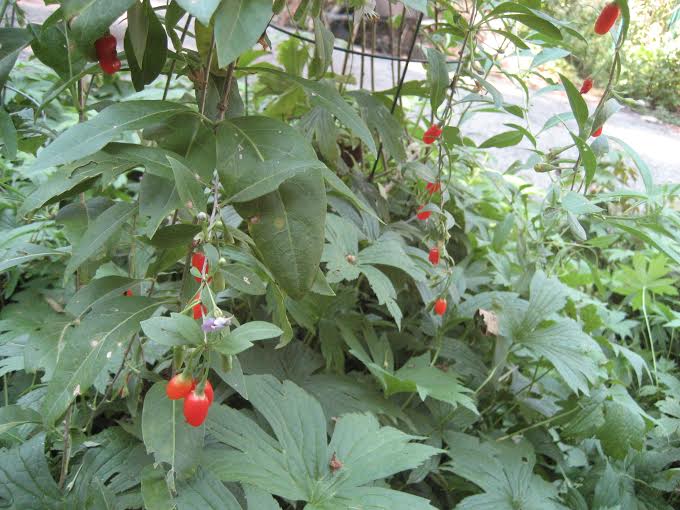 Goji berries growing in a bed of Canadian anemone.
Goji berries growing in a bed of Canadian anemone.
The berries are coming nonstop and provide a great addition to fruit salads.
Companion planting in other mat-like groundcovers would probably produce the same results. I’ve got another goji berry plant planted in the middle of sweet woodruff, and it’s doing almost as well.
